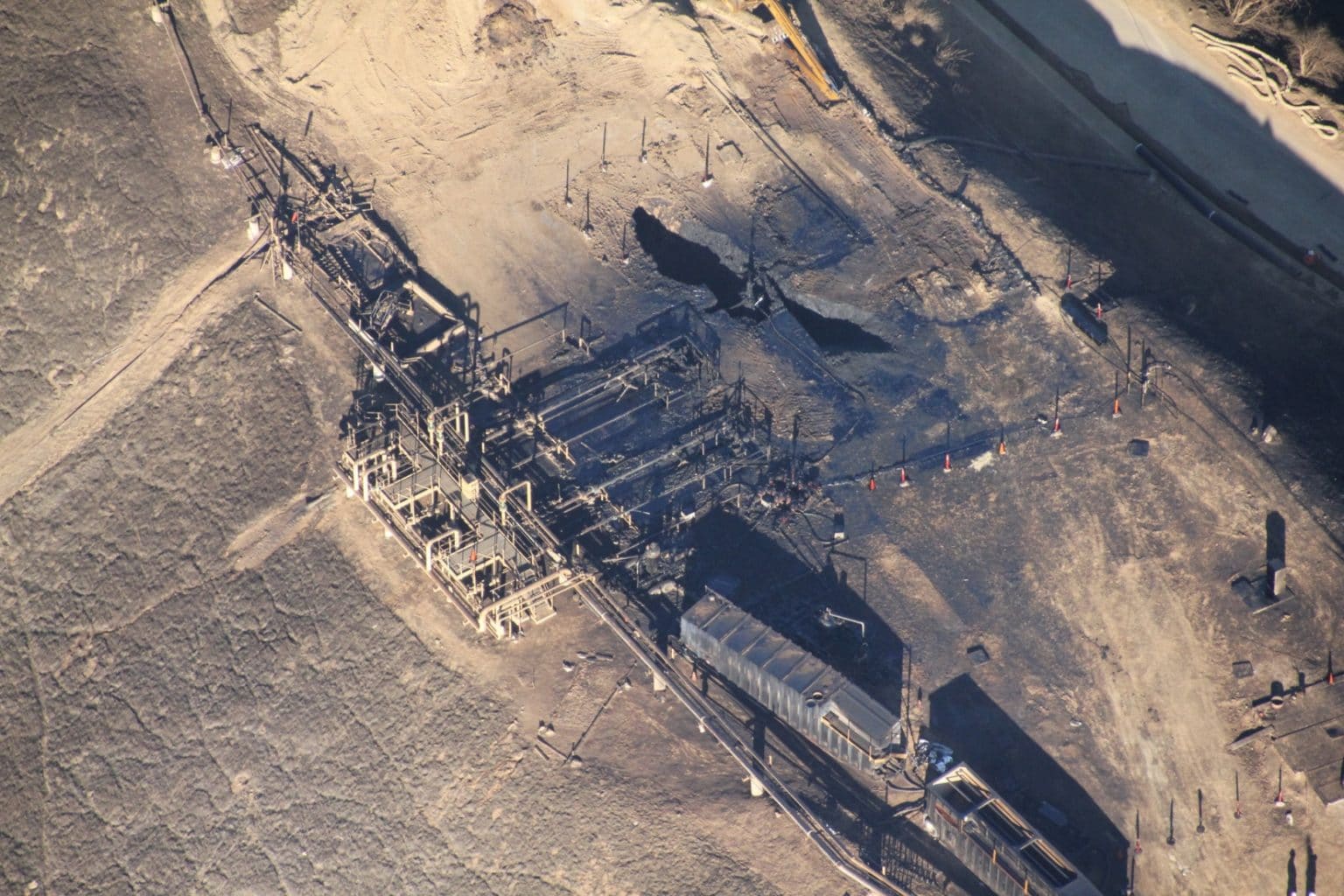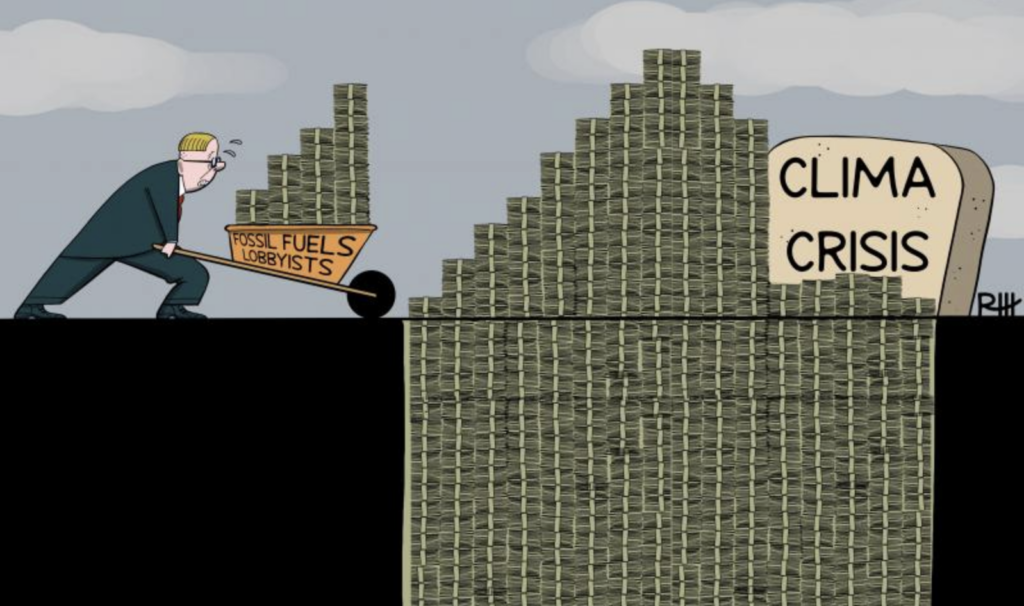On Tuesday, Governor Jerry Brown signed into law Senate Bill 380, which requires rigorous testing protocols to prevent another disastrous blowout at the SoCal Gas Aliso Canyon facility north of Los Angeles. And lawmakers said SB 380 will buy time to fix the larger problem of weak regulations that allowed this disaster to happen.
Aliso Canyon is the largest natural gas storage facility in the western U.S. and the site of the October, 2015 blowout that spewed nearly 100,000 tons of methane into the skies above the San Fernando Valley in Los Angeles for nearly four months.
The bill was co-authored by Senator Fran Pavley (D-Agoura Hills), and Assemblyman Scott Wilk presented SB 380 on the floor of the Assembly on April 28 and it passed both chambers with overwhelming bipartisan support.
The new law requires that all 114 wells at Aliso Canyon undergo additional tests to detect any possible leaks.
Wells can go back into use only after passing four additional structural integrity tests, and wells that have not been fully tested and certified must be temporarily plugged and isolated from the facility.
New injections could only resume if well integrity is proven “to prevent damage to life, health, property, and natural resources and other requirements.”
Senator Pavley said in a prepared statement that the law “puts public safety first.”
“Now that the news cameras have left Aliso Canyon and moved on, the governor and the Legislature have shown that their memories are vivid and that a hard lesson has been learned. We must do all we can to prevent another disaster.”
The bill also sets a deadline of July 1, 2017 for the California Public Utilities Commission (CPUC) to open a proceeding to evaluate the feasibility of scaling back or shutting down the facility.
SB 380 was urgency legislation, which means it takes effect immediately.
Southern California Gas Co. (SoCalGas) officials have said they can fully comply and hope to resume limited injections by late summer.
“SoCalGas strongly supports efforts to enhance the safety of all natural gas storage facilities at both the state level as well as nationally, and we are supportive of forward-looking laws and regulations that adopt best practices for our storage facilities,” the company said in a prepared statement.
SoCalGas has put 101 of its 114 wells through a first phase of basic tests and six wells through four advanced tests. The company has taken 31 wells out of service.
The Aliso Canyon leak started Oct. 23 and led to the temporary closure of two public schools.
The leak emitted greenhouse gases into the atmosphere equivalent to the annual emissions of 450,000 cars. A report published by scientists in March said Aliso Canyon was “the worst man-made greenhouse-gas disaster in U.S. history.”
In the months since the blowout, some shocking practices at Aliso Canyon and other gas storage facilities were revealed.
For one, SoCalGas was sending highly pressurized gas through the outer casing of its wells, without protection. According to the AP, the Alison Canyon wells “were being taxed near capacity” before the blowout.
The company has admitted that the infrastructure is so old at Aliso Canyon that wells have corroded.
Residents cheer action but many remain fearful to return home
At various times, more than 8,000 families were forced to leave their homes within a five-mile radius of the Aliso Canyon facility. Three months after the leak was plugged, 3,000 homeowners — mostly in the nearby Porter Ranch community — have not returned, fearing that their community is still not safe.
On the Facebook page for Save Porter Ranch, a community group that wants to shut down Aliso Canyon permanently, residents routinely complain about returning to their homes only to immediately begin suffering headaches, nosebleeds and other physical symptoms.
Jennifer Millbauer, a spokesperson for Save Porter Ranch, a community group that wants to shut down Aliso Canyon permanently, says that her group was happy that SB 380 was signed into law, although it was a more watered down version of the bill originally proposed.
“We need to stay on top of our elected officials to be sure that SoCal Gas doesn’t pull any tricks,” she told DeSmog.
Next step: a statewide monitoring plan
Lawmakers at the state and local levels are pursuing additional ways of preventing new disasters at Aliso Canyon and beyond.
Senator Pavley has another bill, SB 887, now before the Senate Appropriations Committee, that would require comprehensive safety reforms for California’s 14 natural gas facilities.
SB 887 would require all gas storage facilities to continually monitor natural gas concentrations to detect leaks. It also establishes standards for regular maintenance and inspection of wells, and would require operators to develop detailed emergency response plans.
One charge leveled at SoCal Gas and its parent company Sempra Energy in the wake of the October blowout is that they had no emergency response plan in place.
SB 887 would also encourage greater use of energy storage, through renewable fuels and reduce the energy grid’s reliance on fossil fuels, a spokesperson for Senator Pavley told DeSmog.
At the local level, on Wednesday, the LA City Council Transportation Committee considered a motion regarding a 20-year franchise agreement between SoCalGas, LADWP and the City of Los Angeles.
Right now Los Angeles has a year-to-year contract with SoCalGas for the use of pipeline, storage and other infrastructure. Residents have set their sights on fighting long-term contracts for SoCalGas.
No Blackouts over Aliso
Also this week, a hearing in the Senate Utilities, Energy and Communications Committee offered some key admissions by the utilities and energy regulators.
Officials from the state Public Utilities Commission, the California Independent Systems Operator, Los Angeles Department of Water and Power, San Diego Gas and Electric and SoCal Gas testified, but it was a representative from Southern California Edison (SCE) that made a stunning revelation that refuted a report issued in April by energy regulators and SoCalGas.
That report said there could be blackouts throughout Los Angeles in the summer due to Aliso’s closure, basing this decision on a draft plan for avoiding or minimizing power outages in L.A. and surrounding regions during expected gas shortages.
The draft plan — a joint effort by the California Energy Commission, the CPUC, Cal-ISO and the L.A. Department of Water and Power — said keeping the Aliso Canyon facility closed would mean gas-fired power plants in Southern California could see limited supplies and possibly up to two incidents of interrupted electrical supply this summer.
It was decried by residents as a scare tactic to help the utility to go back to business as usual.
Testimony by SCE at this week’s hearing inadvertently showed that the report really may have been a scare tactic.
According to the representative, Colin Cushin, VP of Energy Procurement Management at SCE — the utility whose electric plants are fed by Aliso’s gas lines — said there would be adequate pipeline capacity and added that summer is, in fact, the low season for natural gas demand, further undercutting the April report’s conclusions. SoCalGas and regulators added that Aliso would be available this summer in any case, should there need to be gas withdrawals.
Jamie Court, president of Consumer Watchdog, issued a statement saying that critics of the April report were vindicated.
“This a people problem too, not a natural gas problem. It’s time to shed some light on the people in government and utilities who are trying to sell us a bag of very expensive energy goods we don’t really need.”
Image credit: Earthworks via Flickr CC
Subscribe to our newsletter
Stay up to date with DeSmog news and alerts







